The need to understand the mechanics of conduct of ‘Deep Operations’ is paramount while undertaking offensive operations. “Limited War” and “Limited Objectives” are mindsets of the mediocre who have not grasped the essence of Major Staff Duties which is to be innovative, gather momentum and be unpredictable after operations commence and not get tied down in predictive methodologies. No War is ever fought and won with adequate resources. However, the fact that India’s Eastern Army Command went to war without possessing an Independent Armoured Brigade and an Independent Amphibious Brigade in its ORBAT stood out as glaring failings. The purpose of doing such an ‘unsparing’ study of the Bangladesh War operations is to drive home the point that if we have to fight the next War, our higher commanders should not be found wanting in the skills needed to undertake ‘Deep Operations’.
The Operation to liberate Bangladesh in 1971 was an acid test as to how a war should be fought to its logical conclusion. The Indian Armed Forces in Eastern Command came out victorious in a matter of two weeks despite having a determined and well-prepared opponent who had six months time to prepare, augment their defences and fine tune their War Plans. The Pakistanis had inducted a total of 42 Infantry Battalions with four Divisional HQs into the Eastern Theatre, besides 15,000 additional personnel of Paramilitary Border Guarding Wings. In retrospect, one can say that the Pakistanis paid the price for being supremely overconfident that India was in no position to launch an all-out liberation war. Since March 1971, the Pak military had done all the right things to deeply antagonise the Bengali population. They behaved like an unaccountable “occupation force” indulging in barbarities unworthy of men in uniform. Their aim was not only to crush the mass-based Awami League which had won the elections, but also to drive out the large minority Hindu population in East Pakistan into India so as to create a serious economic and social burden for us. It was their bad luck that the Indian Army had matured and possessed some senior officers who had mastery over the nuances of fighting ‘Deep Operations’.
Deep Operations is a concept of offensive operations developed by the Soviet Red Army commanders led by Michail Tukachevski in the mid-1930s, which was put into effect in the successful Soviet large scale offensives after the Kursk mega-battle, starting with the liberation of Kharkiev in the Ukraine in September 1943. The ‘Deep Operations’ concept involves employment of multiple echelons (called Developmental Echelons, Strike Echelons and Mobile Groups), orchestrated to tie down the Enemy’s Defensive Battle layout and create opportunities for bypassing them and take the battle into the enemy’s vulnerable depth area and thereafter, concentrate on reducing the enemy’s “Final Objective” in a much earlier timeframe.
The Indian Army was the decisive instrument which undid the divisive Two Nation Theory in the subcontinent, which had pitted brother against brother during partition based on religious identities and which led to the mass transfer of innocent populations, because of a dangerous idea which had caught the imagination of the misled masses.
Conduct of Operations
Tasking of Indian 2 Corps
9 Infantry Division and 4 Mountain Division were to capture Jessore, Kushtia, Khulna and then Faridpur (major ferry site on the River Padma). Thereafter, bounce to Dacca, if opportunity permitted. Before the outbreak of full-fledged war on December 03 – 04, 1971:
• By November 29, ‘9 Infantry Div’ had carried out preliminary operations and reached up to Arpana on the Chaugacha – Jessore Axis. River Bhairab was bridged to open up the Axis.
• 4 Mountain Division had captured Jiban-nagar, Uthali, Darsana and contacted Khalispur on the Axis towards Kotchandpur. It had also advanced up to Silinda towards Kotchandpur.
Indian 2 Corps was the strongest grouping in Eastern Command to make a “Go for Dacca!”. After the outbreak of War, 9 Infantry Div pressed on its attacks towards Jessore using 42 and 350 Infantry Brigades. Jessore was a designated Fortress and Cantonment town assigned to be defended by Pakistan’s 107 Infantry Brigade. As there were also reports of a massive Para drop (dummy), East of Jessore, Cdr 107 Pak Brigade (Brig Malik Hayat Khan) panicked and asked permission from General Niazi to withdraw South towards Khulna as his 9 Div Cdr (Maj Gen M H Ansari) had moved to Faridpur to set up his Tac HQ there and was out of communication.
On December 06, General Niazi gave the permission to abandon Jessore as he wanted the Brigade Group of 4 x Battalions to be extricated intact for later battles. Indian 32 Infantry Brigade captured Jessore on December 07. The early fall of the important Pak fortress of Jessore electrified the whole of Indian Eastern Command to persist with their offensives and at the same time, had the opposite effect of demoralising the other Pak garrisons in East Pakistan who were fighting stubbornly so far. Unfortunately, Indian 2 Corps did not exploit the momentum of this great success and push on in a concerted manner towards the ‘Deep Objectives’ of Faridpur Crossing and Golundo Ghat Ferry on the River Padma, by concentrating on reducing Magura next and seizing bridge-heads on the Rivers Garai and Madhumati thereafter. This was a strategic error of the first magnitude, as 2 Corps had the best chances of closing on to Dacca first! As per plans made before the War, 9 Indian Infantry Division followed Pak 107 Infantry Brigade to the South towards Khulna, instead of masking it with a Brigade. 107 Infantry Brigade fought successive delaying battles till the end of the War and tied down the Indian 9 Infantry Division.
In Indian 4 Mountain Division sector of operations, 41 Mountain Brigade tasked a Battalion Group with armour to establish a block between Chuadanga and Jhenida. This prevented two Pakistani Battalions from falling back on Jhenida and they instead moved North to Kushtia along with the Pakistani 57 Infantry Brigade Commander (Brig Manzoor Ahmed) who had got separated from his HQ at Jhenida. 41 Infantry Brigade advanced along a subsidiary track towards Jhenida and captured it by December 07. 4 Mountain Division thereafter captured Maghura by December 09, by launching 62 Mountain Brigade. Indian 2 Corps was thus ideally poised to undertake ‘Deep Operations’ and capture Gualando Ghat ferry next, but at this crucial stage another tactical blunder was committed! 7 Mountain Brigade (-) of 4 Mountain Division which had been tasked to capture Kushtia in the North, met with stiff opposition including Pakistani armour on December 09. Over the next few days, 4 Mountain Division forgot about its ‘Deep Objectives’ and diverted 41 Mountain Brigade and 62 Infantry Brigade to reduce Kushtia. All areas up to the Hardinge Bridge on the Padma were cleared by December 12. Pak 57 Infantry Brigade blew up this bridge and made a successful exit to Pakistani 16 Infantry Division sector in the North West. This momentous mistake enabled the Pakis to move reinforcements from Dacca and strengthen the lightly held Madhumati River defence line. A great opportunity to progress operations on the Main Thrust Line towards the Dacca Ferry crossings was thus lost. 4 Mountain Div could resume the offensive towards Faridpur only on December 15, with 62 and 7 Mountain Brigades.
The following Flow Chart gives the possible ‘Course of Operations’ in Indian 2 Corps zone, had the concept of Deep Operations been applied by its commanders by tasking a Brigade of 9 Infantry Div to mask Pak 107 Infantry Brigade and another Brigade of 4 Mountain Div to mask Pak 57 Infantry Brigade and progress operations continuously towards the Dacca ferries with the bulk of the Corps’ combat potential:
In the final analysis, strategic judgement was not exercised during the course of evolving battle scenarios and initial success was not exploited to threaten the enemy’s ‘nerve centre’ in an efficient time frame, due to blind adherence to following an ‘attrition strategy’ and chasing the enemy wherever they led the attacker.
- Secure the Siliguri Corridor by pushing back the Pak deployments existing North of the Thakurgaon – Lalmanirhat line.
- Cut the Hilli – Gaibanda ‘waistline’ thereby dividing Pakistani 16 Infantry Div deployment.
- Secure maximum territory including Bogra and important Border towns.
During Preliminary Operations starting from November 21, 1971:
- 9 Mountain Brigade/6 Mountain Div (Army HQ Reserve for Bhutan), assisted 33 Corps by clearing the ‘Teesta Pocket’ by December 08, 1971, and posing a threat to Rangpur.
- 71 Mountain Brigade advanced up to River Atrai and River Dhap, North of Dinajpur.
- 66 Mountain Brigade/20 Mountain Div cleared Phulbari-Charkai-Nawabganj and established a bridgehead across Karatoya River by December 06, evicting Pakistani 26 FF. Due to these developments General Niazi sacked the Pakistani 23 Infantry Brigade Commander.
- 202 Mountain Brigade/20 Mountain Div was held up West of Hilli Complex by Pak 4 FF Grouping.
- 165 Mountain Brigade/20 Mountain Div provided the Firm Base in the Balurghat Bulge for the above mentioned operations.
- 20 Mountain Div again launched 202 Mountain Div onto Hilli Complex. It was cleared of Pakistani 4 FF by December 11, which had put up a heroic defence for over two weeks. 66 Brigade assisted 202 Brigade by clearing Bhaduria, NE of Hilli by December 11, overcoming very stiff resistance. 66 Brigade further exploited up to Khetlal by December 13.
- 340 (I) Mountain Brigade Group which was located South of Dinajpur as Corps Reserve, was released to 20 Mountain Div on December 06, to speed up the operations. It followed 66 Mountain Brigade advance and cut the Rangpur-Pirganj road on December 07. 2/5 GR along with a squadron of 69 Armoured Regiment ambushed the convoy in which Pakistani 16 Div GOC and 205 Brigade Commander were travelling, but they escaped with injuries. 2/5 GR also beat back fierce counterattacks launched by Pakistani 205 Infantry Brigade, in which the CO of 32 BALUCH got killed. By December 09, 340 Brigade succeeded in severing Pakistani 16 Div Sector by advancing up to Sadullahpur. Palashbari, which was to the South of Pirganj, Gaibanda and Phulchari Ghat Ferry were also captured by 66 Mountain Brigade on December 09.
It was at this time that HQ Eastern Command and 33 Corps did not seize the opportunity of this breakthrough, by pushing across a ‘Battalion Group’ including an Armour Squadron and Company Engineers across the wide River Jamuna from Phulchari Ghat Ferry by December 10, to join the ‘race for Dacca’ from the Northern Sector through an unexpected thrust line, which was bereft of any worthwhile opposition.
- 340 Brigade cleared the Pakistani gun positions East of Hilli and captured Ghoraghat by December 12. All offensive actions of 20 Mountain Div were ably supported by the tanks of 69 Armoured Regiment (PT-76), 63 CAV (T-55) and 20 MARATHA LI (Mech).
- 20 Mountain Div then concentrated its attention South towards Bogra, and crossing of Rivers Ichamati, Sibga and Karatoya in the path. 5/11 GR of 340 Brigade supported by tanks raced South to seize the bridge over the River Karatoya intact at Mahasthan, and also overran the 32 BALUCH deployment North of Bogra by December 13. A battle group of 69 Armoured Regiment and 6 GUARDS then bypassed Bogra and established Blocks to its South by December 14. 340 Brigade then attacked Bogra and overran the Tac HQ of Pakistani 16 Infantry Div. All Pakistani resistance was eliminated by December 16 and HQ Pakistani 205 Infantry Brigade with its Commander was captured.
- On December 15, GOC 20 Mountain Div ordered 66 and 202 Mountain Brigades to switch North from the South of Pirganj area, and reduce Rangpur. Rangpur fell to 66 Mountain Brigade on December 16 (AN) including the Tac HQ of Pakisani 34 Infantry Brigade with its Commander, who had been moved up there.
- In the Dinajpur Sector, Indian 71 Mountain Brigade resumed the offensive on December 11, made a successful crossing of River Atrai at Khansama on December 13 against determined opposition and further cleared Darwani, Dangapara and Nilphamari. On December 17, Pakistani 23 Infantry Brigade Commander surrendered at Saidpur.
Analysis of Indian 33 Corps Zone – Operations
33 Corps conducted its operations very effectively against a determined and well-entrenched opponent. Relative strength was only marginally in its favour. Ably supported by armour and a Mechanised Infantry battalion, 20 Div succeeded in bisecting Pakistani 16 Infantry Div deployment on the Hilli – Gaibanda waistline by December 10. Its 340 Brigade overwhelmed Bogra by December 15.
The removal of HQ 3 (I) Armoured Brigade and 63 CAV (-2) from the Eastern Theatre on December 11 by Army HQs (due to the setbacks in Chhamb) when offensive operations were in full swing, was a faulty knee-jerk reaction, which benefitted neither the Eastern Front nor the Western Front. 20 Div could have tasked 202 Brigade on December 12, for the ‘Deep Operations’ task of seizure of the vital Sirajganj Ferry on River Jamuna, South of Bogra leading to Dacca. Its shifting to the North across terrain with very poor communications involving two days of march without artillery and support elements catching up, was due to the Army HQ’s ‘instructions’ of December 13 to consolidate maximum captured territory in the East for the establishment of the interim Bangladesh government, should a UN Security Council-sponsored ‘ceasefire’ come into effect over the next two to three days.




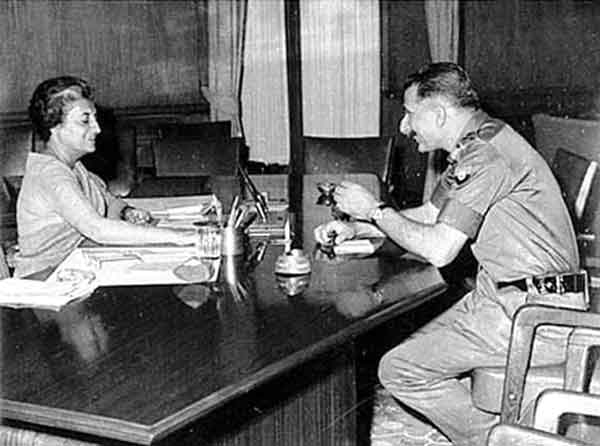
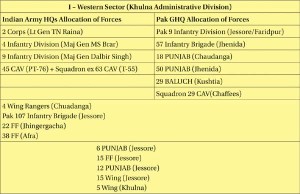
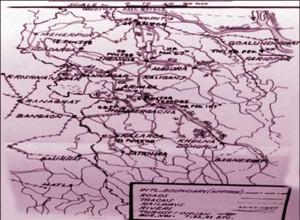

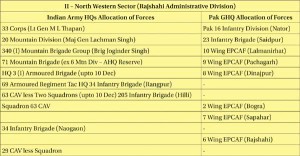
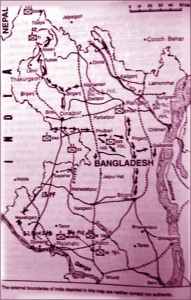
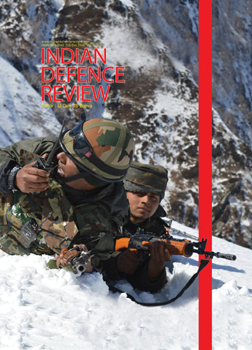

Sir, you may like to correct a major mistake, I take it it must be a typing error, it’s 2 Para which entered Dhacca first and NOT 4 Para. Ref third paragraph of Conduct of Operations.
Regards
A great piece for future students